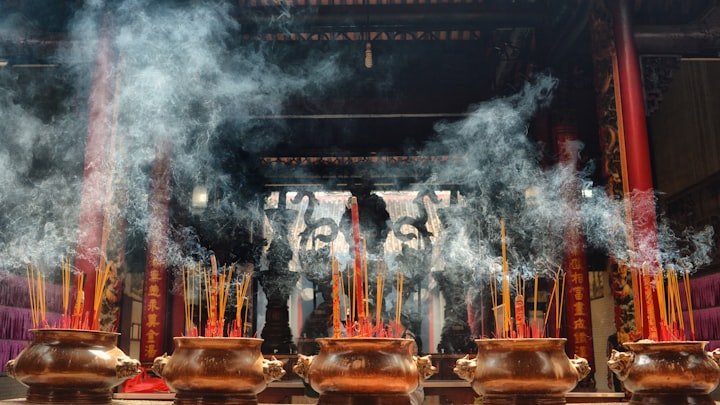The Way of the Fragrance
Kodo - Its Origins, Purposes and Benefits

Kodo (“the way of fragrance”), also known as Koh-do, is an incense ceremony in which one enjoys the fragrances presented to them. It is a cultural and spiritual journey of the soul in harmony with the Zen Spirit.
The Kodo ceremony is one of three Japanese Zen arts, the other two are Sado, a tea ceremony, and Ikebana, a flow arrangement ceremony. Together, all three ceremonies act to awaken the mind, sharpen the senses, and purify the body.
The history of the Kodo ceremony has its roots in Japanese culture, which in turn has its roots in many other Asian cultures in the Pacific Basin. Although the ceremony was founded over 400 years ago, it is still practiced today, where it has become a tradition to bring people together to celebrate life and honor their ancestors.
What Does the Kodo Ceremony Consist Of?
Kodo isn’t just about burning incense, it is a ceremony that requires certain utensils and different types of incense. In the ceremony, a group of people enters a room and the master of ceremonies, “Komoto,” burns the incense and presents the wonderful aromas to the participants.
Fun fact: In cases where Kodo wood chips are used instead of incense sticks, the wood chips are not burned, but only heated over charcoal. This is so that the wood chips gently omit their elegant aroma instead of overwhelming the senses with a strong, smoky smell.
Types of Incenses Used
There are six types of aromatic wood: rakoku, manaban, manaka, kyara, sumatora and sasora. Each of them exudes a fragrance with many nuances when burned, which guests must deconstruct and recognize 5 flavors:
- Sweet (Amai)
- Salty (Shio karai)
- Bitter (Nigai)
- Acid (Suppai)
- Spicy (Korai)
The Ceremony Procedure
At the beginning of the ceremony, the Komoto Master shows all participants the contents of the containers that he will burn together with the wood. Participants are asked to memorize the contents so that when they are burned and presented to them, they can guess which scent belongs to which container. As a rule, the room remains quiet so that participants can “feel” and “hear” the scents instead of just smelling them.
Although it was invented by Japanese court nobles in the sixteenth century, it has since become a pillar of Japanese culture.
Nowadays there are only two schools of Kodo which survived the test of time, the Oie-ryu School, founded by Sanetaka Sanjonishi and the Shino-ryu school, which is associated with Soushin Shino.
Since then, many people have taken up the art of the kodo ceremony. For example, Reverend George Cresswell said that since different incense ingredients must be combined before they can produce a pleasant fragrance, one must therefore be able to distinguish with all his senses an “authentic” incense from an inauthentic one.
An experienced teacher can recognize all aromas, but it takes many years of practice.
See the Kodo ceremony in action in the below short video:
Why Is the Ceremony so Popular?
The Zen practice is popular because it allows people to leave the hustle and bustle of everyday life behind, calm their minds and turn inward. Similar to the tea ceremony (Sado) and the floral art ceremony (Ikebana), it is believed that mastering Kodo allows one to lift one’s mind and focus one’s concentration.
Kodo is not a simple ceremony, it is considered a Zen path that purifies the soul and body, relieves stress and loneliness, and eliminates bad spirits. Moreover, participants experience a spiritual journey as if entering a trance that many compare to the feeling of being “enlightened.”
Types of Kodo Incenses for Home Use
There are several types of Kodo incense suitable for home use, including Kodo incense sticks, Kodo tree and Kogi sticks. These usually come in the form of bamboo, have the shape of a cone, are very fragrant and produce a beautiful relaxing scent.
Although Kodo incense is typically used for ceremonial purposes, it can also be used for meditation. This is because it stimulates deep meditative states by allowing you to focus on a single object without thinking about the entire experience. Many who use Kodo for meditation purposes report that it not only makes their meditation sessions much easier but also more enjoyable.
About the Creator
Kristin Mccallum
My passion for self-development comes from a life-long obsession of always trying to better myself. I'm here to write about some of the things that have worked for me so you can benefit from them as well!






Comments
There are no comments for this story
Be the first to respond and start the conversation.